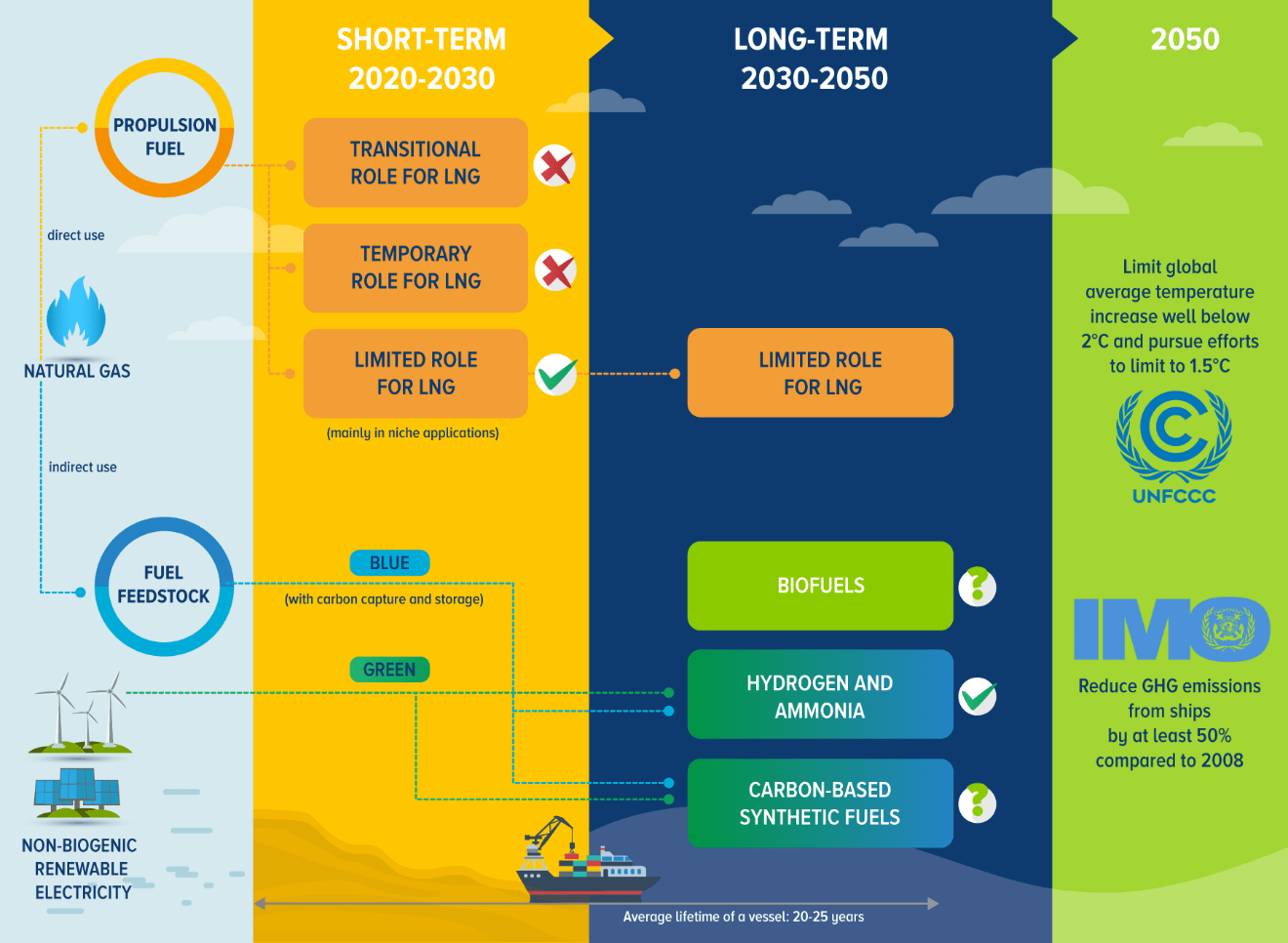The Role of LNG in the Transition Toward Low- and Zero-Carbon Shipping
The report attempts to identify the role of liquefied natural gas (LNG) as a bunker fuel in the years 2020–2050.

LNG is questionable, risky, and incompatible with climate goals
“The Role of LNG in the Transition Towards Low and Zero Carbon Shipping” was published by the World Bank in April 2021. The report attempts to identify the role of liquefied natural gas (LNG) as a bunker fuel in the years 2020–2050, and if LNG could contribute to the targets set by Initial International Maritime Organization (IMO) greenhouse gas (GHG) Strategy and the sector’s transition toward low- and zero-carbon shipping.
“To minimize the potential loss of returns, industry stakeholders should consider LNG’s questionable long-term competitiveness as a bunker fuel when developing their future business strategies.”
The report concludes:
- LNG’s role as a bunker fuel is likely limited, with rapidly declining demand in 2030.
- Public policies supporting LNG as a bunker fuel should be avoided. Instead, a strong focus on policies and actions that regulate life-cycle methane emissions and accelerate the research, development, and deployment of zero-carbon bunker fuels will send a clear sign of the risks of LNG as a bunker fuel.
- LNG GHG performance and investment make substantial implementation unattractive from an environmental and economic perspective.
- LNG’s role in shipping is jeopardized by several factors, including the risk of a technology lock-in with a GHG emissions trajectory incompatible with the IMO’s 2050 climate target.
- When considering LNG as bunker fuel, the shipping sector should assess the internal and external climate, policy landscape, and societal pressure.
Read the report to learn more.
For media inquiries please contact [email protected].